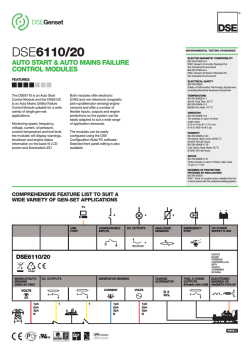
High-Side Power Distribution Switch
NCP380, NCV380 Fixed/Adjustable Current‐Limiting Power‐Distribution Switches The NCP380 is a high side power-distribution switch designed for applications where heavy capacitive loads and short-circuits are likely to be encountered. The device includes an integrated 55 mW (DFN package), P-channel MOSFET. The device limits the output current to a desired level by switching into a constant-current regulation mode when the output load exceeds the current-limit threshold or a short is present. The current-limit threshold is either user adjustable between 100 mA and 2.1 A via an external resistor or internally fixed. The power-switch rise and fall times are controlled to minimize current ringing during switching. An internal reverse-voltage detection comparator disables the power-switch if the output voltage is higher than the input voltage to protect devices on the input side of the switch. The FLAG logic output asserts low during over current, reverse-voltage or over temperature conditions. The switch is controlled by a logic enable input active high or low. www.onsemi.com UDFN6 CASE 517AB TSOP−5 CASE 483 TSOP−6 CASE 318G MARKING DIAGRAMS 1 2 3 XXMG G 6 5 4 UDFN6 5 XXXAYWG G Features • 2.5 V – 5.5 V Operating Range • 70 mW High-side MOSFET • Current Limit: 1 TSOP−5 ♦ • • • • • • • • • • • User adjustable from 100 mA to 2.1 A Fixed 500 mA, 1 A, 1.5 A, 2 A and 2.1 A Under Voltage Lock-out (UVLO) Built-in Soft-start Thermal Protection Soft Turn-off Reverse Voltage Protection Junction Temperature Range: −40°C to 125°C Enable Active High or Low (EN or EN) Compliance to IEC61000−4−2 (Level 4) ♦ 8.0 kV (Contact) ♦ 15 kV (Air) UL Listed − File No. E343275 NCV Prefix for Automotive and Other Applications Requiring Unique Site and Control Change Requirements; AEC−Q100 Qualified and PPAP Capable These are Pb-Free Devices ♦ XXXAYWG G 1 TSOP−6 XXX A M Y W G = Specific Device Code =Assembly Location = Date Code = Year = Work Week = Pb−Free Package (Note: Microdot may be in either location) ORDERING INFORMATION See detailed ordering and shipping information in the package dimensions section on page 20 of this data sheet. Typical Applications • Laptops • USB Ports/Hubs • TVs © Semiconductor Components Industries, LLC, 2015 January, 2015 − Rev. 14 1 Publication Order Number: NCP380/D NCP380, NCV380 USB DATA USB INPUT 5V OUT IN Rfault 100 kW D+ D− VBUS GND 1 mF 120 mF USB Port NCP380 FLAG FLAG EN ILIM* EN Rlim GND *For Adjustable Version Only. Figure 1. Typical Application Circuit OUT 1 ILIM* 2 FLAG PAD1 3 6 IN OUT 1 5 GND GND 2 FLAG 3 4 EN 5 IN 4 EN TSOP−5 UDFN6 (Top view) IN 1 6 OUT GND 2 5 ILIM* EN 3 4 FLAG TSOP−6 *For adjustable version only, otherwise not connected. Figure 2. Pin Connections Table 1. PIN FUNCTION DESCRIPTION Pin Name Type Description EN INPUT GND POWER Ground connection; IN POWER Power-switch input voltage; connect a 1 mF or greater ceramic capacitor from IN to GND as close as possible to the IC. FLAG OUTPUT Active-low open-drain output, asserted during overcurrent, overtemperature or reverse-voltage conditions. Connect a 10 kW or greater resistor pull-up, otherwise leave unconnected. OUT OUTPUT Power-switch output; connect a 1 mF ceramic capacitor from OUT to GND as close as possible to the IC is recommended. A 1 mF or greater ceramic capacitor from OUT to GND must be connected if the USB requirement (i.e.120 mF capacitor minimum) is not met. ILIM* INPUT PAD1** THERMAL Enable input, logic low/high (i.e. EN or EN) turns on power switch External resistor used to set current-limit threshold; recommended 5 kW < RILIM < 250 kW. Exposed Thermal Pad: Must be soldered to PCB Ground plane *(For adjustable version only, otherwise not connected. **For DFN version only. www.onsemi.com 2 NCP380, NCV380 Table 2. MAXIMUM RATINGS Rating Symbol Value Unit VIN , VOUT −7.0 to +7.0 V VEN, VILIM, VFLAG, VIN, VOUT −0.3 to +7.0 V ISINK 1 mA From IN to OUT Pins: Input/Output (Note 1) IN, OUT, EN, ILIM, FLAG, Pins: Input/Output (Note 1) FLAG Sink Current ILIM Source Current ILIM 1 mA ESD Withstand Voltage (IEC 61000−4−2) (Output Only, when Bypassed with 1.0 mF Capacitor Minimum) ESD IEC 15 Air, 8 Contact kV Human Body Model (HBM) ESD Rating (Note 2) ESD HBM 2,000 V Machine Model (MM) ESD Rating (Notes 2 and 3) ESD MM 200 V Latch-up Protection (Note 4) Pins IN, OUT, EN, ILIM, FLAG LU mA Maximum Junction Temperature Range (Note 6) TJ −40 to +TSD °C Storage Temperature Range TSTG −40 to +150 °C Moisture Sensitivity (Note 5) MSL Level 1 100 Stresses exceeding those listed in the Maximum Ratings table may damage the device. If any of these limits are exceeded, device functionality should not be assumed, damage may occur and reliability may be affected. 1. According to JEDEC standard JESD22−A108. 2. This device series contains ESD protection and passes the following tests: Human Body Model (HBM) ±2.0 kV per JEDEC standard: JESD22−A114 for all pins. Machine Model (MM) ±200 V per JEDEC standard: JESD22−A115 for all pins. 3. Except EN pin, 150 V. 4. Latch up Current Maximum Rating: ±100 mA per JEDEC standard: JESD78 class II. 5. Moisture Sensitivity Level (MSL): 1 per IPC/JEDEC standard: J−STD−020. 6. A thermal shutdown protection avoids irreversible damage on the device due to power dissipation. Table 3. OPERATING CONDITIONS Symbol Parameter VIN Operational Power Supply VEN Enable Voltage Conditions Min Typ Max Unit 2.5 − 5.5 V 0 − 5.5 TA Ambient Temperature Range −40 25 +85 TJ °C Junction Temperature Range −40 25 +125 °C RILIM Resistor from ILIM to GND Pin 5.0 − 250 kW ISINK FLAG Sink Current − − 1.0 mA mF CIN Decoupling Input Capacitor COUT Decoupling Output Capacitor RqJA Thermal Resistance Junction-to-Air IOUT PD Maximum DC Current Power Dissipation Rating (Note 9) 1.0 − − USB Port per Hub 120 − − mF UDFN−6 Package (Notes 7 and 8) − 120 − °C/W TSOP−5 Package (Notes 7 and 8) − 305 − °C/W TSOP−6 Package (Notes 7 and 8) − 280 − °C/W UDFN−6 Package − − 2.1 A TSOP−5, TSOP−6 Package − − 1.0 A UDFN−6 Package − 830 − mW TSOP−5 Package − 325 − mW TSOP−6 Package − 350 − mW UDFN−6 Package − 325 − mW TSOP−5 Package − 130 − mW TSOP−6 Package − 145 − mW TA v 25°C TA = 85°C 7. A thermal shutdown protection avoids irreversible damage on the device due to power dissipation. 8. The RqJA is dependent of the PCB heat dissipation. Board used to drive this data was a 2” × 2” NCP380EVB board. It is a 2 layers board with 2-once copper traces on top and bottom of the board. Exposed pad is connected to ground plane for UDFN−6 version only. 9. The maximum power dissipation (PD) is given by the following formula: T JMAX * T A PD + R qJA www.onsemi.com 3 NCP380, NCV380 Table 4. ELECTRICAL CHARACTERISTICS (Min & Max Limits apply for TA between −40°C to +85°C and TJ up to +125°C for VIN between 2.5 V to 5.5 V (Unless otherwise noted). Typical values are referenced to TA = +25°C and VIN = 5 V.) Parameter Symbol Conditions Min Typ Max Unit mW POWER SWITCH RDS(on) Static Drain-source On-state Resistance DFN Package TSOP Package TR Output Rise Time TF Output Fall Time VIN = 5 V –40°C < TJ < 125°C − 55 75 2.5 V < VIN < 5.5 V –40°C < TJ < 125°C − − 110 VIN = 5 V –40°C < TJ < 125°C − 70 95 2.5 V < VIN < 5.5 V –40°C < TJ < 125°C − − 135 VIN = 5 V CLOAD = 1 mF, RLOAD = 100 W (Note 10) 0.3 1.0 1.5 VIN = 2.5 V 0.2 0.65 1.0 VIN = 5 V 0.1 − 0.5 VIN = 2.5 V 0.1 − 0.5 1.2 − − mW ms ENABLE INPUT EN OR EN VIH High-level Input Voltage V VIL Low-level Input Voltage − − 0.4 V IEN Input Current VEN = 0 V, VEN = 5 V −0.5 − 0.5 mA TON Turn On Time CLOAD = 1 mF, RLOAD = 100 W (Note 11) 2.0 3.0 4.0 ms TOFF Turn Off Time 1.0 − 3.0 ms RILIM = 20 kW (Note 11) 1.02 1.20 1.38 A RILIM = 40 kW (Notes 11 and 13) 0.595 0.700 0.805 Fixed 0.5 A (Note 12) 0.5 0.58 0.65 Fixed 1.0 A (Note 12) 1.0 1.15 1.3 Fixed 1.5 A (Note 12) 1.5 1.75 1.9 Fixed 2.0 A (Note 12) 2.0 2.25 2.5 Fixed 2.1 A (Note 12) 2.1 2.25 2.5 CURRENT LIMIT IOCP Current-limit Threshold (Maximum DC Output Current IOUT Delivered to Load) VIN = 5 V A TDET Response Time to Short Circuit − 2.0 − ms TREG Regulation Time 1.8 3.0 4.0 ms TOCP Overcurrent Protection Time 14 20 26 ms − 100 − mV 4.0 6.0 9.0 ms 7.0 10 15 ms VIN = 5 V REVERSE-VOLTAGE PROTECTION VREV Reverse-voltage Comparator Trip Point (VOUT – VIN) TREV Time from Reverse-voltage Condition to MOSFET Switch Off & FLAG Low TRREV Re-arming Time VIN = 5 V UNDERVOLTAGE LOCKOUT VUVLO IN Pin Low-level Input Voltage VIN Rising 2.0 2.3 2.4 V VHYST IN Pin Hysteresis TJ = 25°C 25 − 60 mV TRUVLO Re-arming Time 7.0 10 15 ms − 1.0 2.1 mA − − − − − − 90 80 70 − − 1.0 SUPPLY CURRENT IINOFF Low-level Output Supply Current IINON High-level Output Supply Current IREV Reverse Leakage Current VIN = 5 V, No Load on OUT, Device OFF VEN = 0 V or VEN = 5 V VIN = 5 V, Device Enable 2 A and 2.1 A Versions 1 A and 1.5 A Current Versions 0.5 A Current Version VOUT = 5 V, VIN = 0 V www.onsemi.com 4 TJ = 25°C mA mA NCP380, NCV380 Table 4. ELECTRICAL CHARACTERISTICS (continued) (Min & Max Limits apply for TA between −40°C to +85°C and TJ up to +125°C for VIN between 2.5 V to 5.5 V (Unless otherwise noted). Typical values are referenced to TA = +25°C and VIN = 5 V.) Symbol Parameter Conditions Min Typ Max Unit mV FLAG PIN FLAG Output Low Voltage IFLAG = 1 mA 400 ILEAK Off-state Leakage VFLAG = 5 V 1.0 mA TFLG FLAG Deglitch FLAG De-assertion Time due to Overcurrent or Reverse Voltage Condition 4.0 6.0 9.0 ms TFOCP FLAG Deglitch FLAG Assertion due to Overcurrent 6.0 8.0 12 ms VOL THERMAL SHUTDOWN TSD Thermal Shutdown Threshold 140 °C TSDOCP Thermal Regulation Threshold 125 °C TRSD Thermal Shutdown Rearming Threshold 115 °C Product parametric performance is indicated in the Electrical Characteristics for the listed test conditions, unless otherwise noted. Product performance may not be indicated by the Electrical Characteristics if operated under different conditions. 10. Parameters are guaranteed for CLOAD and RLOAD connected to the OUT pin with respect to the ground, See Figure 3. 11. Adjustable current version, RILIM tolerance ±1%. 12. Fixed current version. 13. Not production test, guaranteed by characterization. VIN IN OUT 1 mF CLOAD RLOAD NCP380 GND Figure 3. Test Configuration 50% VEN TR TF VEN TOFF VOUT TON VOUT 90% 10% 90% 10% Figure 4. Voltage Waveform www.onsemi.com 5 10% NCP380, NCV380 BLOCK DIAGRAM Blocking Control IN ILIM* OUT Current Limiter Vref TSD Gate Driver UVLO Osc GND Flag /FLAG EN EN Block Control Logic and Timer *For adjustable version only, otherwise not connected. Figure 5. Block Diagram www.onsemi.com 6 NCP380, NCV380 Ton + TR Figure 6. Ton Delay and Trise Time Toff + Tfall Figure 7. Toff Delay and Tfall www.onsemi.com 7 NCP380, NCV380 Figure 8. Turn On a Short TSD Warning Treg TOCP Figure 9. 2 W Short on Output. Complete Regulation Sequence www.onsemi.com 8 NCP380, NCV380 TFOCP TSD Warning VIN VOUT IIN /FLAG Figure 10. OCP Regulation and TSD Warning Event TOCP Treg Figure 11. Timer Regulation Sequence During 2 W Overload www.onsemi.com 9 NCP380, NCV380 Figure 12. Direct Short on OUT Pin Figure 13. From Timer Regulation to Load Removal Sequence www.onsemi.com 10 NCP380, NCV380 TFOCP VOUT IOUT /FLAG Figure 14. From No Load to Direct Short Circuit VREV VOUT VIN TFREV /FLAG Figure 15. Reverse Voltage Detection www.onsemi.com 11 NCP380, NCV380 T RREV Figure 16. Reverse Voltage Removal 2.4 2.38 2.36 UVLO (V) 2.34 2.32 2.3 2.28 2.26 2.24 UVLO vs. Temperature 2.22 UVLO − hysteresis vs. Temperature 2.2 −50 0 50 100 150 Temperature (°C) Figure 17. Undervoltage Threshold (Falling) and Hysteresis www.onsemi.com 12 NCP380, NCV380 Low−Level Output Supply Current vs Vin −40°C 25°C 85°C 125°C 2.0 1.8 1.6 IINOFF (mA) 1.4 1.2 1.0 0.8 0.6 0.4 0.2 0.0 2.4 2.9 3.4 3.9 4.4 4.9 5.4 Vin(V) Figure 18. Standby Current vs Vin High−Level Output Supply Current vs Vin −40°C 25°C 85°C 125°C 100 90 80 70 IINON (mA) 60 50 40 30 20 10 0 2.4 2.9 3.4 3.9 4.4 Vin(V) Figure 19. Quiescent Current vs Vin www.onsemi.com 13 4.9 5.4 NCP380, NCV380 TSOP Package 100 95 RDS(on) vs. Temperature 90 85 75 70 65 60 55 50 45 40 −50 −40 −30 −20 −10 0 10 20 30 40 50 60 70 80 90 100 110 120 130 140 Temperature (°C) Figure 20. RDS(on) vs Temperature, TSOP Package mDFN Package 100 95 90 RDS(on) vs. Temperature 85 RDS(on) (mW) RDS(on) (mW) 80 80 75 70 65 60 55 50 45 40 −50 −40 −30 −20 −10 0 10 20 30 40 50 60 70 80 90 100 110 120 130 140 Temperature (°C) Figure 21. RDS(on) vs Temperature, mDFN Package www.onsemi.com 14 NCP380, NCV380 FUNCTIONAL DESCRIPTION Overview VOUT Thermal Regulation Threshold The NCP380 is a high side P channel MOSFET power distribution switch designed to protect the input supply voltage in case of heavy capacitive loads, short circuit or over current. In addition, the high side MOSFET is turned off during under voltage, thermal shutdown or reverse voltage condition. Adjustable version allows the user to program the current limit threshold using an external resistor. Thanks to the soft start circuitry, NCP380 is able to limit large current and voltage surges. Timer Regulation Mode IOUT IOCP TOCP Overcurrent Protection TREG Figure 24. Short circuit NCP380 switches into a constant current regulation mode when the output current is above the IOCP threshold. Depending on the load, the output voltage is decreased accordingly. • In case of hot plug with heavy capacitive load, the output voltage is brought down to the capacitor voltage. The NCP380 will limit the current to the IOCP threshold value until the charge of the capacitor is completed. Then, the device enters in timer regulation mode, described in 2 phases: • Off-phase: Power MOSFET is off during TOCP to allow the die temperature to drop. • On-phase: regulation current mode during TREG. The current is regulated to the IOCP level. The timer regulation mode allows the device to handle high thermal dissipation (in case of short circuit for example) within temperature operating condition. NCP380 stays in on-phase/off-phase loop until the over current condition is removed or enable pin is toggled. VOUT Drop due to Capacitor Charge IOUT Remark: Other regulation modes can be available for different applications. Please contact our ON Semiconductor representative for availability. IOCP FLAG Indicator Figure 22. Heavy capacitive load The FLAG pin is an open-drain MOSFET asserted low during over current, reverse-voltage or over temperature conditions. When an over current or a reverse voltage fault is detected on the power path, FLAG pin is asserted low at the end of the associate deglitch time (see electrical characteristics). Thanks to this feature, the FLAG pin is not tied low during the charge of a heavy capacitive load or a voltage transient on output. Deglitch time is TFOCP for over current fault and TREV for reverse voltage. The FLAG pin remains low until the fault is removed. Then, the FLAG pin goes high at the end of TFGL. • In case of overload, the current is limited to the IOCP value and the voltage value is reduced according to the load by the following relation: V OUT + R LOAD I OCP (eq. 1) VOUT IOCP × RLOAD IOUT Undervoltage Lock-out Thanks to a built-in under voltage lockout (UVLO) circuitry, the output remains disconnected from input until VIN voltage is below VUVLO. When VIN voltage is above VUVLO, the system try to reconnect the output after a rearming time. TRUVLO. This circuit has a VHYST hysteresis witch provides noise immunity to transient. IOCP Figure 23. Overload • In case of short circuit or huge load, the current is limited to the IOCP value within TDET time until the short condition is removed. If the output remains shorted or tied to a very low voltage, the junction temperature of the chip exceeds TSDOCP value and the device enters in thermal shutdown (MOSFET is turned-off). Thermal Sense Thermal shutdown turns off the power MOSFET if the die temperature exceeds TSD. A Hysteresis prevents the part from turning on until the die temperature cools at TRSD. www.onsemi.com 15 NCP380, NCV380 Reverse Voltage Protection Blocking Control When the output voltage exceeds the input voltage by VREV voltage during TREV, the reverse voltage circuitry disconnects the output in order to protect the power supply. The same time TREV is needed to turn on again the power MOS plus a rearming time TRREV. The blocking control circuitry switches the bulk of the power MOS. When the part is off, the body diode limits the leakage current IREV from OUT to IN. In this mode, anode of the body diode is connected to IN pin and cathode is connected to OUT pin. In operating condition, anode of the body diode is connected to OUT pin and cathode is connected to IN pin preventing the discharge of the power supply. Enable Input Enable pin must be driven by a logic signal (CMOS or TTL compatible) or connected to the GND or VIN. A logic low on EN or high on EN turns-on the device. A logic high on EN or low on EN turns off device and reduces the current consumption down to IINOFF. APPLICATION INFORMATION Power Dissipation Adjustable Current-Limit Programming (for adjustable version only) The junction temperature of the device depends on different contributing factors such as board layout, ambient temperature, device environment, etc... Yet, the main contributor in terms of junction temperature is the power dissipation of the power MOSFET. Assuming this, the power dissipation and the junction temperature in normal mode can be calculated with the following equations: R D + R DS(on) Where: PD RDS(on) IOUT 2 (eq. 2) = Power dissipation (W) = Power MOSFET on resistance (W) = Output current (A) TJ + PD Where: TJ RqJA TA ǒIOUTǓ The NCP380xMUAJAA and NCP380xSNAJAA, respectively mDFN and TSOP6 packages, are proposed to have current limit flexibility for end Customer. Indeed, Ilim pin is available to connect pull down resistor to ground, which participate to the current threshold adjustment. It’s strongly recommended to use 0.1 or 1% resistor tolerance to keep the over current accuracy. For this resistance selection, Customer should define first of all, the USB current to sustain, without the device enters in the protection sequence. Main rule is to select this pull down resistor in order to make sure min current limit is above the USB current to provide continuously to the upstream accessory. Following, the main table selection contains the USB current port for the accessory, the standard resistor selection and typical/max over current threshold. R qJA ) T A (eq. 3) = Junction temperature (°C) = Package thermal resistance (°C/W) = Ambient temperature (°C) Power dissipation in regulation mode can be calculated by taking into account the drop VIN−VOUT link to the load by the following relation: P D + ǒV IN * R LOAD Where: PD VIN RLOAD IOCP I OCPǓ I OCP (eq. 4) = Power dissipation (W) = Input Voltage (V) = Load Resistance (W) = Output regulated current (A) www.onsemi.com 16 NCP380, NCV380 Table 5. RESISTOR SELECTION FOR ADJUSTABLE CURRENT LIMIT VERSION Min Current Limit Value (A) Theoric Resistor Value (kW) Selected Resistor Value (kW) 1% or 0.1% Typical OCP Target Value (A) Maximum Current Value (A) 0.5 44.2 44.2 0.59 0.67 0.6 37.5 37.4 0.71 0.81 0.7 32.2 31.6 0.825 0.95 0.8 27.7 27.4 0.94 1.08 0.9 24.0 23.7 1.06 1.22 1.0 21.0 21 1.18 1.35 1.1 18.5 18.2 1.3 1.49 1.2 16.6 16.5 1.41 1.62 1.3 14.6 14.3 1.53 1.76 1.4 13.0 13 1.65 1.9 1.5 11.4 11.3 1.78 2.05 1.6 10.4 10.2 1.88 2.17 1.7 9.2 9.09 2.01 2.31 1.8 8.3 8.25 2.12 2.438 1.9 7.4 7.32 2.23 2.56 2.0 6.5 6.49 2.36 2.7 2.1 5.6 5.49 2.48 2.85 The “Min current limit Value” column, represents the DC current to provide to the accessory without over current activation. ILIM 5 ) 45.256 ILIM 4 * 155.25 ILIM 3 ) 274.39 ILIM 2 * 267.6 ILIM ) 134.21 Rlim Versus OCP Average RLIM (kW) Rlim + −5.2959 Second column is the theoretical resistor value obtained with following formula to achieve typical current target: 48 46 44 42 40 38 36 34 32 30 28 26 24 22 20 18 16 14 12 10 8 6 4 2 0 RLIM vs. OCP Average 0 0.2 0.4 0.6 0.8 1.0 1.2 1.4 1.6 1.8 2.0 2.2 Current Limit (A) Figure 25. RLIM Curve vs. Current Limit www.onsemi.com 17 2.4 2.6 2.8 (eq. 5) NCP380, NCV380 When the resistor is choosing to fit with the Customer application, the limits of the over current threshold can be calculated with the following formula: IOCP min + 1.6915129 * 0.0330328 ) 0.0000009 Rlim ) 0.0011207(Rlim * 22.375) 2 * 0.0000451 (Rlim * 22.375) 3 ) (eq. 6) (Rlim * 22.375) 4 IOCP max + 2.2885175 * 0.0446914 ) 0.0000012 Rlim ) 0.0015163(Rlim * 22.375) 2 * 0.000061 (Rlim * 22.375) 3 ) (eq. 7) (Rlim * 22.375) 3 ) (eq. 8) (Rlim * 22.375) 4 IOCPtyp + 1.9900152 * 0.0388621 ) 0.0000011 Rlim ) 0.0013185(Rlim * 22.375) 2 * 0.0000531 (Rlim * 22.375) 4 The minimum, typical and maximum current curves are described in the following graph: 3.0 2.8 IOCP min vs. RLIM 2.6 IOCP vs. RLIM 2.4 IOCP max vs. RLIM 2.2 2.0 ILIM (A) 1.8 1.6 1.4 1.2 1.0 0.8 0.6 0.4 0.2 0 5 7 9 11 13 15 17 19 21 23 25 27 29 31 33 35 37 39 41 43 45 47 RLIM (kW) Figure 26. Current Threshold vs. Rlim Resistor PCB Recommendations That is recommended to respect 6 kW−47 kW resistor range for two reasons. For the low resistor values, the current limit is pushed up to high current level. Due to internal power dissipation capability, a maximum of 2.4 A typical can be set for the mDFN package if thermal consideration are respected. For the TSOP6 version 1.2 A is the maximum recommended value because the part could enter in thermal shutdown mode before constant current regulation mode. In the other side, if we want to keep 15% of accuracy, high resistor values can be used up to 50 kW. With higher value, the current threshold is lower than 500 mA, so in this case degraded accuracy can be observed. The NCP380 integrates a PMOS FET rated up to 2 A, and the PCB design rules must be respected to properly evacuate the heat out of the silicon. The UDFN6 PAD1 must be connected to ground plane to increase the heat transfer if necessary. This pad must be connected to ground plane. By increasing PCB area, the RqJA of the package can be decreased, allowing higher power dissipation. www.onsemi.com 18 www.onsemi.com 19 Figure 27. USB Host Typical Application USB Port GND D− D+ VBUS OUT 2 3 USB Transceiver GND 1 IN LDO 3.3 V 10 mF GND D− 10 GND 3 2 1 EN DATA_OUT[x:0] DATA_IN[x:0] GND CRTL_OUT[x:0] SYS CRTL_IN[x:0] VCC 4 5 6 USB Host Controller /FLAG ILIM OUT NCP380 GND IN STATUS EN GPM21BR61C106KE15L VCC 12 VBUS(sense) CRTL[x:0] 11 DATA[x:0] D+ 1 4.7 mF Upstream USB Port 3 4 2 5 IN Power Supply 1 10 Downstream USB Port VCC 5 12 CRTL[x:0] VBUS(sense) 11 2 DATA[x:0] D+ 3 D− 4 GND GND USB Transceiver SYSTEM GPM31CR60J107ME39L 100 mF USB Port GND D− D+ VBUS NCP380, NCV380 NCP380, NCV380 Table 6. ORDERING INFORMATION Device Marking Active Enable Level Over Current Limit Evaluation Board UL Listed CB Scheme NCP380LSNAJAAT1G AAC Adj. NCP380LSNAJAGEVB Y Y NCP380LSN05AAT1G AC5 0.5 A NCP380LSN05AGEVB Y Y NCP380LSN10AAT1G AC6 1.0 A NCP380LSN10AGEVB Y Y NCP380LMUAJAATBG AA Adj. NCP380LMUAJAGEVB Y Y NCV380LMUAJAATBG* AN Adj. NCP380LMUAJAGEVB Y Y NCP380LMU05AATBG AE 0.5 A NCP380LMU05AGEVB Y Y NCP380LMU10AATBG AF 1.0 A NCP380LMU10AGEVB Y Y NCP380LMU15AATBG AG 1.5 A NCP380LMU15AGEVB Y Y NCV380LMU15AATBG* AQ 1.5 A NCP380LMU15AGEVB Y Y NCP380LMU20AATBG AL 2.0 A NCP380LMU20AGEVB Y Y NCP380HSNAJAAT1G AAD Adj. NCP380HSNAJAGEVB Y Y NCP380HSN05AAT1G AC7 0.5 A NCP380HSN05AGEVB Y Y NCP380HSN10AAT1G ADA 1.0 A NCP380HSN10AGEVB Y Y NCP380HMUAJAATBG AC Adj. NCP380HMUAJAGEVB Y Y Low NCV380HMUAJAATBG* AP Adj. NCP380HMUAJAGEVB Y Y NCP380HMU05AATBG AH 0.5 A NCP380HMU05AGEVB Y Y NCP380HMU10AATBG AJ 1.0 A NCP380HMU10AGEVB Y Y NCP380HMU15AATBG AK 1.5 A NCP380HMU15AGEVB Y Y NCP380HMU20AATBG AM 2.0 A NCP380HMU20AGEVB Y Y NCP380HMU21AATBG AU 2.1 A NCP380HMU21AGEVB Y Y High Package Shipping† TSOP−6 (Pb−Free) TSOP−5 (Pb−Free) UDFN6 (Pb−Free) TSOP−6 (Pb−Free) 3,000 Tape / Reel TSOP−5 (Pb−Free) UDFN6 (Pb−Free) †For information on tape and reel specifications, including part orientation and tape sizes, please refer to our Tape and Reel Packaging Specifications Brochure, BRD8011/D. *NCV Prefix for Automotive and Other Applications Requiring Unique Site and Control Change Requirements; AEC−Q100 Qualified and PPAP Capable www.onsemi.com 20 NCP380, NCV380 PACKAGE DIMENSIONS UDFN6 2x2, 0.65P CASE 517AB ISSUE C NOTES: 1. DIMENSIONING AND TOLERANCING PER ASME Y14.5M, 1994. 2. CONTROLLING DIMENSION: MILLIMETERS. 3. DIMENSION b APPLIES TO PLATED TERMINAL AND IS MEASURED BETWEEN 0.15 AND 0.25MM FROM THE TERMINAL TIP. 4. COPLANARITY APPLIES TO THE EXPOSED PAD AS WELL AS THE TERMINALS. 5. TIE BARS MAY BE VISIBLE IN THIS VIEW AND ARE CONNECTED TO THE THERMAL PAD. A B D NOTE 5 PIN ONE REFERENCE 0.10 C ÍÍÍ ÍÍÍ ÍÍÍ 0.10 C E END VIEW TOP VIEW A3 A 6X 0.08 C A1 NOTE 4 C SIDE VIEW DETAIL A D2 1 ÉÉÉ ÇÇÇ ÇÇÇ EXPOSED Cu DETAIL B 0.10 C SEATING PLANE L MOLD CMPD A3 A1 MILLIMETERS MIN MAX 0.45 0.55 0.00 0.05 0.127 REF 0.25 0.35 2.00 BSC 1.50 1.70 2.00 BSC 0.80 1.00 0.65 BSC 0.25 0.35 0.15 --- DETAIL B ALTERNATE CONSTRUCTIONS L L 3 ÉÉ ÇÇ ÉÉ DIM A A1 A3 b D D2 E E2 e L L1 L1 DETAIL A E2 ALTERNATE TERMINAL CONSTRUCTIONS 6 4 e BOTTOM VIEW 6X RECOMMENDED SOLDERING FOOTPRINT* PACKAGE OUTLINE 1.70 6X 0.47 b 0.10 M C A B 0.05 M C 2.30 0.95 1 0.65 PITCH 6X 0.40 DIMENSIONS: MILLIMETERS *For additional information on our Pb−Free strategy and soldering details, please download the ON Semiconductor Soldering and Mounting Techniques Reference Manual, SOLDERRM/D. www.onsemi.com 21 NCP380, NCV380 PACKAGE DIMENSIONS TSOP−5 CASE 483−02 ISSUE K NOTE 5 2X D 5X 0.20 C A B 0.10 T M 2X 0.20 T B 5 1 4 2 S 3 K B DETAIL Z G A A NOTES: 1. DIMENSIONING AND TOLERANCING PER ASME Y14.5M, 1994. 2. CONTROLLING DIMENSION: MILLIMETERS. 3. MAXIMUM LEAD THICKNESS INCLUDES LEAD FINISH THICKNESS. MINIMUM LEAD THICKNESS IS THE MINIMUM THICKNESS OF BASE MATERIAL. 4. DIMENSIONS A AND B DO NOT INCLUDE MOLD FLASH, PROTRUSIONS, OR GATE BURRS. MOLD FLASH, PROTRUSIONS, OR GATE BURRS SHALL NOT EXCEED 0.15 PER SIDE. DIMENSION A. 5. OPTIONAL CONSTRUCTION: AN ADDITIONAL TRIMMED LEAD IS ALLOWED IN THIS LOCATION. TRIMMED LEAD NOT TO EXTEND MORE THAN 0.2 FROM BODY. TOP VIEW DIM A B C D G H J K M S DETAIL Z J C 0.05 H SIDE VIEW C SEATING PLANE END VIEW MILLIMETERS MIN MAX 3.00 BSC 1.50 BSC 0.90 1.10 0.25 0.50 0.95 BSC 0.01 0.10 0.10 0.26 0.20 0.60 0_ 10 _ 2.50 3.00 SOLDERING FOOTPRINT* 0.95 0.037 1.9 0.074 2.4 0.094 1.0 0.039 0.7 0.028 SCALE 10:1 mm Ǔ ǒinches *For additional information on our Pb−Free strategy and soldering details, please download the ON Semiconductor Soldering and Mounting Techniques Reference Manual, SOLDERRM/D. www.onsemi.com 22 NCP380, NCV380 PACKAGE DIMENSIONS TSOP−6 CASE 318G−02 ISSUE V D H 6 E1 5 ÉÉÉ 1 NOTE 5 2 4 L2 GAUGE PLANE E 3 L M b SEATING PLANE DETAIL Z e 0.05 C A c A1 DETAIL Z NOTES: 1. DIMENSIONING AND TOLERANCING PER ASME Y14.5M, 1994. 2. CONTROLLING DIMENSION: MILLIMETERS. 3. MAXIMUM LEAD THICKNESS INCLUDES LEAD FINISH. MINIMUM LEAD THICKNESS IS THE MINIMUM THICKNESS OF BASE MATERIAL. 4. DIMENSIONS D AND E1 DO NOT INCLUDE MOLD FLASH, PROTRUSIONS, OR GATE BURRS. MOLD FLASH, PROTRUSIONS, OR GATE BURRS SHALL NOT EXCEED 0.15 PER SIDE. DIMENSIONS D AND E1 ARE DETERMINED AT DATUM H. 5. PIN ONE INDICATOR MUST BE LOCATED IN THE INDICATED ZONE. DIM A A1 b c D E E1 e L L2 M MIN 0.90 0.01 0.25 0.10 2.90 2.50 1.30 0.85 0.20 0° MILLIMETERS NOM MAX 1.00 1.10 0.06 0.10 0.38 0.50 0.18 0.26 3.00 3.10 2.75 3.00 1.50 1.70 0.95 1.05 0.40 0.60 0.25 BSC 10° − RECOMMENDED SOLDERING FOOTPRINT* 6X 0.60 6X 3.20 0.95 0.95 PITCH DIMENSIONS: MILLIMETERS *For additional information on our Pb−Free strategy and soldering details, please download the ON Semiconductor Soldering and Mounting Techniques Reference Manual, SOLDERRM/D. ON Semiconductor and the are registered trademarks of Semiconductor Components Industries, LLC (SCILLC) or its subsidiaries in the United States and/or other countries. SCILLC owns the rights to a number of patents, trademarks, copyrights, trade secrets, and other intellectual property. A listing of SCILLC’s product/patent coverage may be accessed at www.onsemi.com/site/pdf/Patent−Marking.pdf. SCILLC reserves the right to make changes without further notice to any products herein. SCILLC makes no warranty, representation or guarantee regarding the suitability of its products for any particular purpose, nor does SCILLC assume any liability arising out of the application or use of any product or circuit, and specifically disclaims any and all liability, including without limitation special, consequential or incidental damages. “Typical” parameters which may be provided in SCILLC data sheets and/or specifications can and do vary in different applications and actual performance may vary over time. All operating parameters, including “Typicals” must be validated for each customer application by customer’s technical experts. SCILLC does not convey any license under its patent rights nor the rights of others. SCILLC products are not designed, intended, or authorized for use as components in systems intended for surgical implant into the body, or other applications intended to support or sustain life, or for any other application in which the failure of the SCILLC product could create a situation where personal injury or death may occur. Should Buyer purchase or use SCILLC products for any such unintended or unauthorized application, Buyer shall indemnify and hold SCILLC and its officers, employees, subsidiaries, affiliates, and distributors harmless against all claims, costs, damages, and expenses, and reasonable attorney fees arising out of, directly or indirectly, any claim of personal injury or death associated with such unintended or unauthorized use, even if such claim alleges that SCILLC was negligent regarding the design or manufacture of the part. SCILLC is an Equal Opportunity/Affirmative Action Employer. This literature is subject to all applicable copyright laws and is not for resale in any manner. PUBLICATION ORDERING INFORMATION LITERATURE FULFILLMENT: Literature Distribution Center for ON Semiconductor P.O. Box 5163, Denver, Colorado 80217 USA Phone: 303−675−2175 or 800−344−3860 Toll Free USA/Canada Fax: 303−675−2176 or 800−344−3867 Toll Free USA/Canada Email: [email protected] N. American Technical Support: 800−282−9855 Toll Free USA/Canada Europe, Middle East and Africa Technical Support: Phone: 421 33 790 2910 Japan Customer Focus Center Phone: 81−3−5817−1050 www.onsemi.com 23 ON Semiconductor Website: www.onsemi.com Order Literature: http://www.onsemi.com/orderlit For additional information, please contact your local Sales Representative NCP380/D
© Copyright 2025
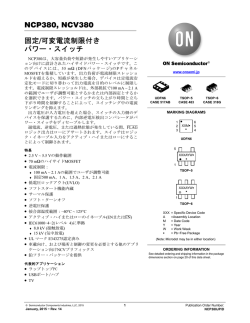
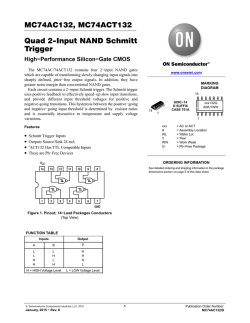
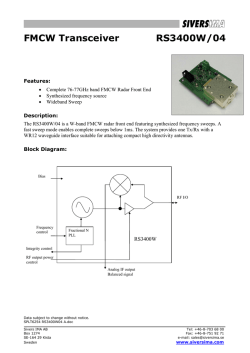
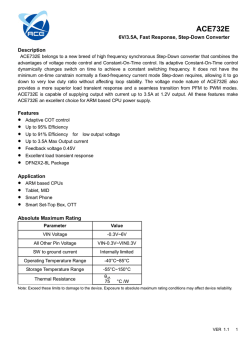
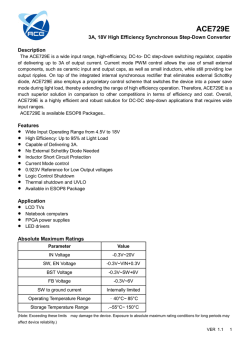
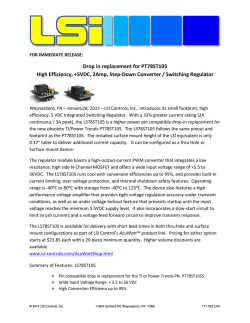
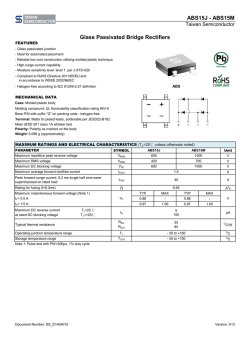
![[参考資料]](http://s2.esdocs.com/store/data/000489216_1-5bbad8a5fad3f11d19ecf30a87a397d9-250x500.png)
